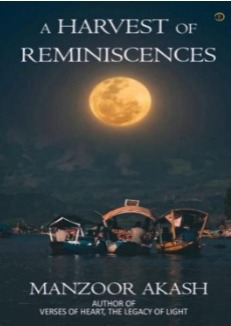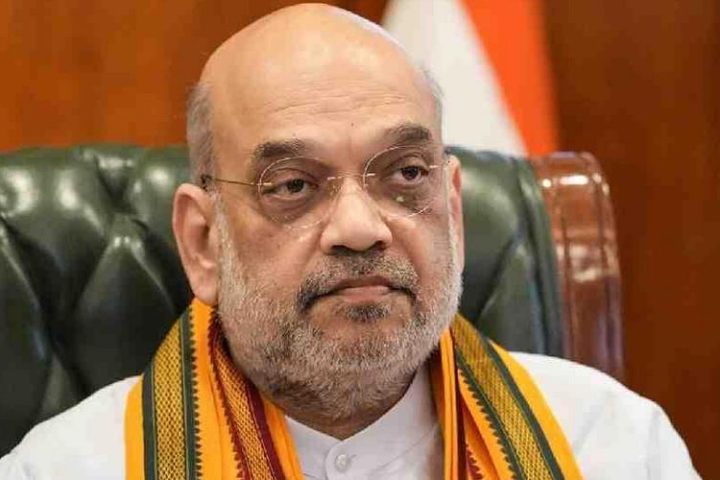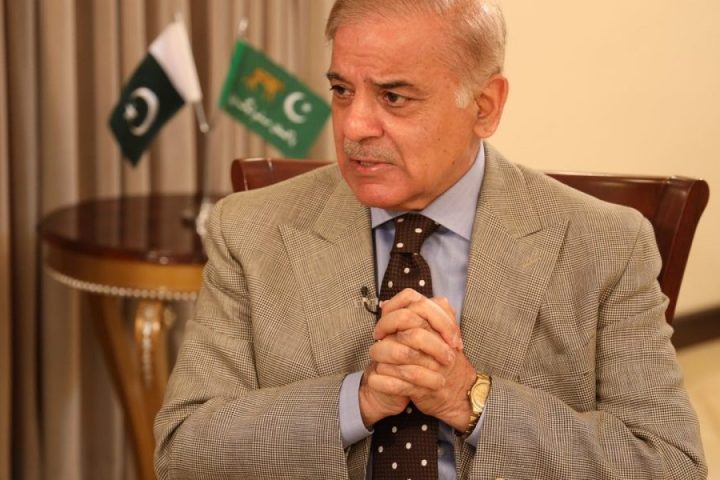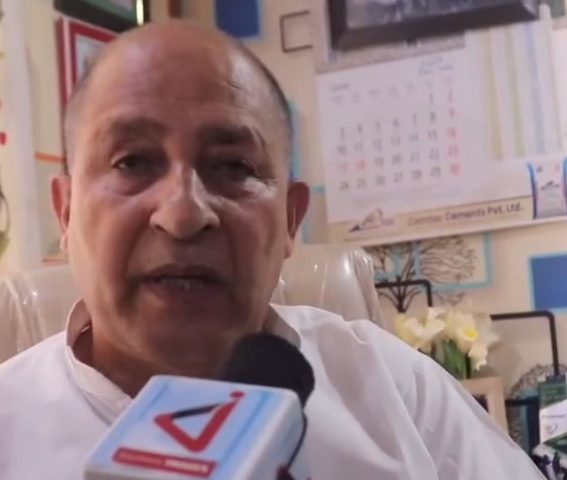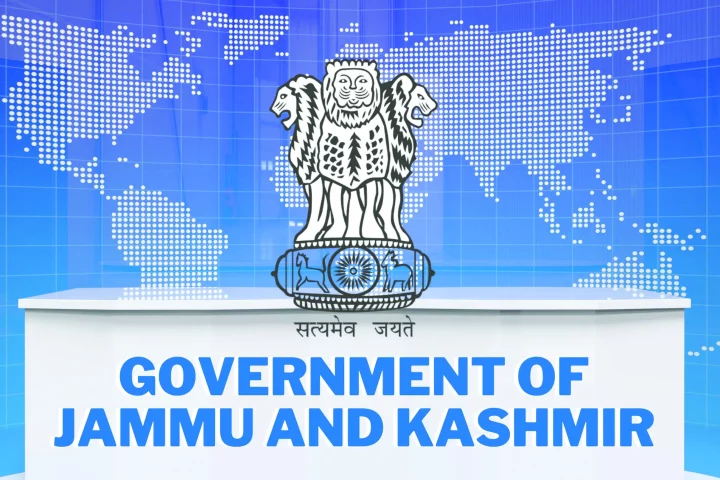By: Sadaket Malik
In the picturesque Doda District of Jammu and Kashmir lies a linguistic gem – the Bhaderwahi language. Spoken by at least 120,000 people in Bhaderwah and its surrounding villages, this Pahari language has a rich tapestry of grammar and folklore, yet it awaits official recognition.
G.A. Grierson, in his classification of Western Pahari languages, included Bhaderwahi as part of the Indo-Aryan group. Despite being part of the linguistic survey of India, this ancient language has faced a dearth of attention from linguists, policymakers, and the government.
Bhaderwah, often referred to as the “Switzerland of India” or “Chotta Kashmir,” boasts not only of its lush green landscapes but also of being a linguistic treasure trove. The linguistic landscape around Bhaderwahi includes neighboring languages like Bhalesi, Sarazi, Padri, Pougali, Saroori, BanjwaliDachhni, Marwi, and Khashali.
The linguistic landscape of the Bhadrawahi group, as meticulously outlined by GA Grierson in his seminal work, “Linguistics’ Survey of India Volume 9 Part 4,” offers a captivating journey into the diverse tapestry of languages within this region during the early 20th century. Grierson’s detailed examination provides insights into the origins, influences, and demographic aspects of the Bhadrawahi group, with a particular focus on Pangwali, Bhaderwahi, Bhalesi, and Padri.
As per Grierson, Pangwali, initially categorized as a dialect of Chameali for geographical convenience, stands out as a mixed language spoken in Chamba. Grierson notes its complex genesis, with speakers originating from the hills of Bhaderwah and its vicinity, as well as Lahul and Kulu. The intermingling of these diverse linguistic influences results in Pangwali sharing characteristics with the Bhaderwahi group, illustrating the initial stages of merging where Western Pahari converges with Kashmiri. However, Pangwali also exhibits signs of Chameali influence, leading to its classification as a dialect of that language. Grierson employs a comparative approach, frequently drawing parallels between Pangwali and Bhadrawahi to enrich the linguistic analysis.
The Bhadrawahi group comprises of three principal dialects: Bhaderwahi, Bhalesi (now a days having its huge speakers), and Padri (an endangered language). Grierson provides figures for the speakers of these dialects in 1901, revealing a total of 25,517 speakers, with Bhaderwahi and Bhalesi constituting 20,977 speakers. Despite the absence of figures for the 1891 census, Grierson relies on the 1901 data to offer a quantitative perspective on the linguistic demographics of the Bhadrawahi group during that period.
Bhaderwahi and Bhalesi find their roots in Bhadrawah, a Jagir of the late Raja Sir Amar Singh, strategically located north-west of Chamba State and south of the Chenab river. Grierson delves into the local nomenclature, highlighting the district’s dual identity as Bhadhlai among locals and Bodarkah among Kashmiris. The linguistic richness extends further, with Bhalesi emerging as a distinctive Bhaderwahi form spoken in Bhalessa, a valley east of Bhadrawah and adjacent to the Chamba frontier. Meanwhile, Padari, the language of the mountainous Padar region in Kishtwar, contributes to the linguistic diversity within the Bhadrawahi group.
The linguistic boundaries of the Bhadrawahi group are outlined with clarity. To the south and west of Bhaderwah lies the main portion of the state of Jammu, characterized by the Dogri language. In contrast, to the north, Kishtwar hosts Kashmiri dialects, emphasizing the intricate linguistic mosaic of the region. The Zanskar range to the north of Padder serves as a geographical demarcation, separating the Bhadrawahi group from Tibet.
The Western Pahari group, encompassing 17 different languages, stretches across regions in Jammu and Kashmir, Uttarakhand, Uttar Pradesh, Delhi, Punjab, Madhya Pradesh, and Himachal Pradesh. Bhaderwahi, as part of the Chenab valley group, holds its place in this linguistic diversity.
Despite being a linguistic and cultural anchor for the people of Bhaderwah, Bhaderwahi struggles for recognition. It lacks a script of its own, utilizing Arabic or Devnagri scripts. The language finds expression mainly in songs, with less attention from authorities.
Amitabh VikramDwivedi’s typological sketch highlights the lexical similarities and unique features of Bhaderwahi. Lexically, it shares connections with languages like Pangwali, Siraji, Padri, and Bhalesi.
The phonological intricacies of Bhaderwahi, as explored by researchers like Aejaz Mohammed Sheikh, reveal a vowel system with seven vowels and distinctive features like nasalization. Consonants, too, play a vital role, with gemination observed in word middle and final positions.
Morphologically, Bhaderwahi showcases a rich system with nouns, adjectives, verbs, and adverbs. The language’s pluralization involves the use of specific vowel sounds.
In terms of mutual intelligibility, Bhaderwahi stands as a distinct language, not showing significant similarities with Dogri, Hindi, or Kashmiri. However, languages like Pangwali, Siraji, Padri, and Bhalesi share up to fifty-five percent lexical similarity.
Despite its linguistic richness, Bhaderwahi faces challenges. It lacks official recognition and is categorized as “definitely endangered” by UNESCO. Efforts from local committees and initiatives aim to promote and preserve Bhaderwahi, but its journey towards recognition and sustainability continues. The recent announcement by the LG administration to develop Bhaderwahi and allied languages signifies a step in the right direction, providing hope for the linguistic heritage.
Grammatical Features of Bhaderwahi Language
- Gender and Number:
– Bhaderwahi nouns exhibit grammatical gender, distinguishing between masculine and feminine.
– The gender of nouns extends to both animate and inanimate entities.
– Masculine nouns often end with /o/ or consonants, while feminine nouns may end with /i/ or consonants.
- Pluralization:
– Pluralization in Bhaderwahi involves adding suffixes such as /ɑ/, /ɑ̃/, /i/, and /ĩ/ to indicate plural forms.
– Vowel changes occur in word-final and medial positions, transitioning to /e/, /ẽ/, and /ɑ:/.
- Word Order:
– Bhaderwahi follows a Subject-Object-Verb (SOV) word order, with the subject appearing first, followed by the object and then the verb.
– In the absence of an object, the word order is Subject-Verb (SV).
- Stress:
– Stress in Bhaderwahi is not a phonemic feature but is typically observed in syllables with consonant clusters.
– The first syllable often gets stressed, especially in disyllabic words with two vowel sounds of the same length.
- Nasalization:
– Nasalization is a distinctive feature in Bhaderwahi, with nasalized forms of vowels occurring in various positions.
– Nasalization is phonemic and contributes to lexical differences, e.g., /tɑ/ and /tɑ̃/ (‘and’ and ‘then’).
- Consonant Clusters:
– Consonant clusters are present in Bhaderwahi, occurring at word-initial, word-middle, and word-final positions.
– Double consonant clusters are observed, leading to gemination, where the first sound becomes unaspirated.
- Vowel System:
– Bhaderwahi has a vowel system with seven vowels: I, e, a, o, u, ɨ, and ə.
– Vowel length is phonemic, with each vowel having a longer counterpart, except for ɨ and ə.
– Nasalized forms of vowels are common, except for I, e, and ɨ vowels.
8.Diphthongs:
– Bhaderwahi exhibits diphthongs, gliding vowel sequences that occur within the same syllable.
– Examples include eiː (‘to appear’), uaː (‘taste’), and ai (‘cat’).
- Morphology:
– Morphology in Bhaderwahi is complex, with prefixing, suffixing, and infixing employed in derivational and inflectional processes.
– Noun and nominal morphology, adjectives, verb morphology, and adverbs exhibit distinctive features.
– The language uses morphosyntactic categories for gender, number, and case.
- Mutual Intelligibility:
Bhaderwahi shows limited mutual intelligibility with neighboringlanguages like Dogri, Hindi, and Kashmiri.
– Languages such as Pangwali, Siraji, Padri, and Bhalesi exhibit lexical similarities, ranging up to fifty-five percent.
These grammatical features contribute to the unique linguistic identity of Bhaderwahi, reflecting its rich heritage and distinctiveness within the Western Pahari group.
Grierson’s linguistic survey unravels a rich narrative of diversity within the Bhadrawahi group, combining historical, geographical, and demographic dimensions. The figures provided add a quantitative layer to our understanding, offering a glimpse into the linguistic intricacies of the region during the early 20th century. Grierson’s meticulous exploration serves as a valuable resource for scholars and enthusiasts alike, contributing to the broader understanding of linguistic diversity and cultural dynamics in this distinctive part of India.

Kashmir Images is an English language daily newspaper published from Srinagar (J&K), India. The newspaper is one of the largest circulated English dailies of Kashmir and its hard copies reach every nook and corner of Kashmir Valley besides Jammu and Ladakh region.

